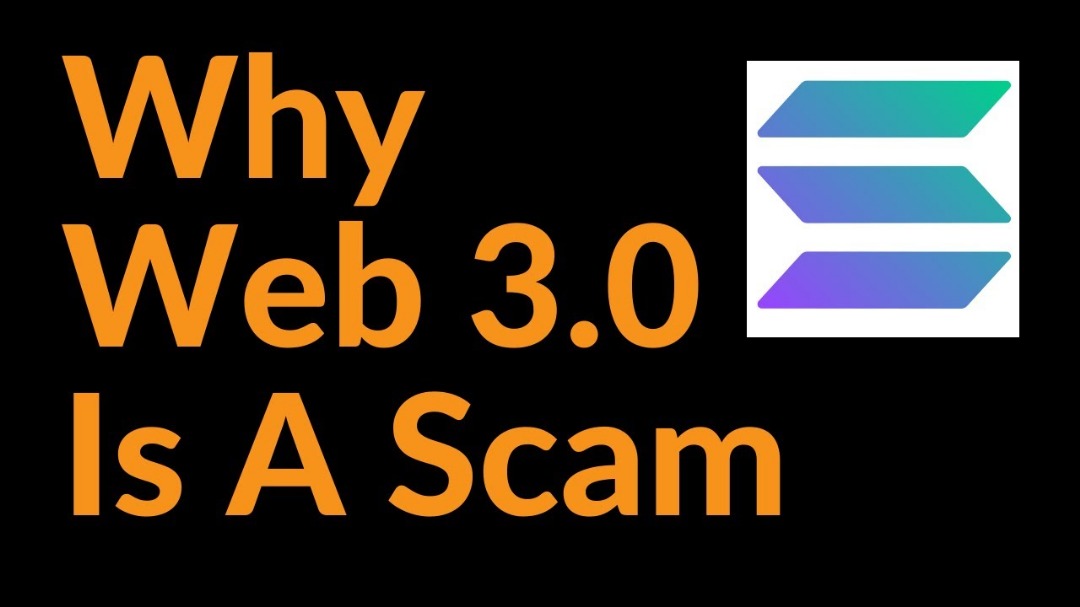Decentralized blockchain-powered vision of the internet—has hit a fever pitch, with skeptics and believers clashing over its legitimacy. As of April 2, 2025, fresh developments, from crashing crypto markets to high-profile critiques, have reignited the debate: Is Web3 a transformative leap forward or just a shiny scam wrapped in tech jargon? Let’s unpack the latest and see where the truth might lie.
The Crumbling Crypto Cornerstone
Web3’s foundation rests heavily on cryptocurrencies and blockchain, but this week’s market turmoil has cast a long shadow. On March 30, Bitcoin dipped below $50,000—its lowest since December—dragging Ethereum and other Web3 tokens like Solana down with it, per CoinDesk. The crash wiped out $200 billion in market value, fueled by regulatory rumors and a high-profile hack of a decentralized finance (DeFi) platform that saw $50 million vanish overnight. Posts on X lit up with users calling it “proof Web3’s a house of cards,” pointing to the volatility that’s plagued crypto since its inception.
Critics argue this instability undermines Web3’s promise of a stable, user-owned internet. If the financial backbone can’t hold, they say, the whole vision—decentralized apps (dApps), NFTs, and all—starts to look like a Ponzi scheme dressed up as innovation.
High-Profile Doubts Amplify the Noise
The skepticism got a megaphone this week when tech mogul Elon Musk, speaking at a March 31 conference, called Web3 “a buzzword salad with no substance.” Musk, no stranger to crypto hype, argued that its touted benefits—like cutting out middlemen—come with trade-offs like slow transaction speeds and energy waste. His comments echo a growing chorus: Jack Dorsey’s 2021 quip that Web3 is a “venture capitalist’s playground” resurfaced on X, alongside posts from developers bemoaning blockchain’s clunky real-world use.
On April 1, a Wired exposé didn’t help Web3’s case, detailing how a hyped NFT project, “MetaVerse Gods,” collapsed after its founders allegedly siphoned $10 million and vanished. Stories like these fuel the scam narrative, suggesting Web3’s decentralized ethos is a magnet for grifters exploiting naive investors.
The Counterargument: Vision in Progress
Web3’s defenders, though, aren’t backing down. On March 29, Ethereum co-founder Vitalik Buterin took to X to argue that critics miss the point: Web3 isn’t about instant perfection but building a system where users, not Big Tech, hold power. He pointed to successes like decentralized autonomous organizations (DAOs) managing millions in assets and platforms like Lens Protocol, which aims to wrest social media from corporate control.
This week also saw a small win—on April 2, a Web3 gaming startup, Axie Infinity, reported a 15% uptick in active users despite the crypto dip, hinting at resilience in niche applications. Proponents say the tech’s still young, likening it to the internet’s shaky dial-up days before broadband changed everything.
The Scam Spectrum: Where Does Web3 Land?
So, is Web3 a scam? The answer isn’t black-and-white. There’s no denying the red flags: pump-and-dump NFT schemes, rug pulls in DeFi, and a hype machine that’s minted more millionaires than tangible products. A 2024 study cited on X found 70% of new crypto tokens lost 90% of their value within a year—hardly a vote of confidence.
Yet, dismissing Web3 entirely ignores its potential. Blockchain’s transparency has real uses—think supply chain tracking or voting systems—and the idea of a less centralized internet resonates in an era of data breaches and censorship. The catch? Execution’s lagging behind the evangelism, and bad actors are thriving in the gaps.
The Verdict—for Now
This week’s chaos suggests Web3’s at a crossroads. It’s not a scam in the classic sense—no single mastermind’s pulling strings but it’s riddled with scammy elements that prey on hype and FOMO. For every legit project, there’s a dozen duds, and the average user’s more likely to lose a wallet than gain a revolution. Still, the tech’s too nascent to write off completely—its jury’s still out, deliberating amid the noise.
As markets wobble and critics sharpen their knives, one thing’s clear: Web3’s dream of a new internet won’t come cheap—or clean. Whether it’s a scam or a slow-burn success, 2025 might just be the year we find out. For now, caveat emptor rules the day.







